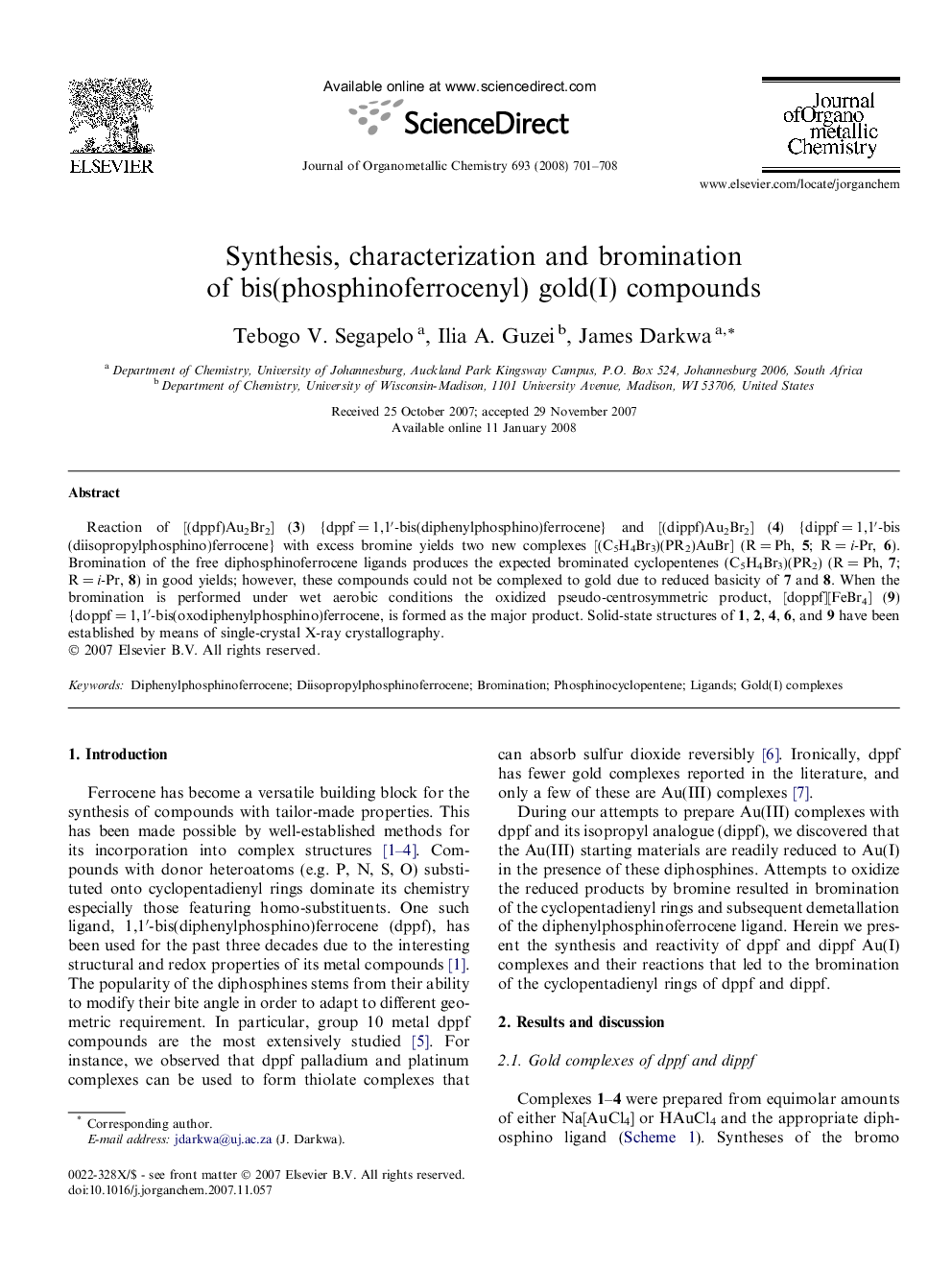| Article ID | Journal | Published Year | Pages | File Type |
|---|---|---|---|---|
| 1323346 | Journal of Organometallic Chemistry | 2008 | 8 Pages |
Reaction of [(dppf)Au2Br2] (3) {dppf = 1,1′-bis(diphenylphosphino)ferrocene} and [(dippf)Au2Br2] (4) {dippf = 1,1′-bis(diisopropylphosphino)ferrocene} with excess bromine yields two new complexes [(C5H4Br3)(PR2)AuBr] (R = Ph, 5; R = i-Pr, 6). Bromination of the free diphosphinoferrocene ligands produces the expected brominated cyclopentenes (C5H4Br3)(PR2) (R = Ph, 7; R = i-Pr, 8) in good yields; however, these compounds could not be complexed to gold due to reduced basicity of 7 and 8. When the bromination is performed under wet aerobic conditions the oxidized pseudo-centrosymmetric product, [doppf][FeBr4] (9) {doppf = 1,1′-bis(oxodiphenylphosphino)ferrocene, is formed as the major product. Solid-state structures of 1, 2, 4, 6, and 9 have been established by means of single-crystal X-ray crystallography.
Graphical abstractReaction of [(dppf)Au2Br2] (3), [(dippf)Au2Br2] (4), dppf or dippf with excess bromine results in the bromination of the cyclopentadienyl rings of the phosphinoferrocene instead of oxidation of the gold in the case of the gold complexes.Figure optionsDownload full-size imageDownload as PowerPoint slide
